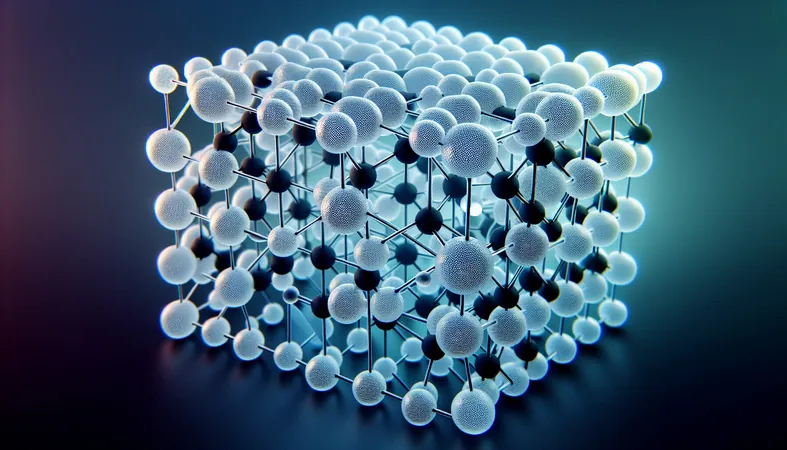
Unlocking Quantum Motion: How Memory Impacts Atomic Behavior on Metal Surfaces
2025-06-03
Author: Daniel
The Key Role of Quantum Mechanics in Atoms and Molecules
In countless technological ventures that revolve around chemical energy production and storage, atoms and molecules are constantly in motion on metallic surfaces. Understanding and modeling this dynamic behavior is essential for tackling material degradation, ensuring chemical selectivity, and optimizing catalytic interactions.
Electrons vs. Nuclei: A Weighty Difference
Electrons, with a mass nearly 2,000 times lighter than even the smallest atomic nuclei, can swiftly adapt to shifts in nuclear positions. This significant mass discrepancy leads researchers to often rely on a simplified approach known as the "adiabatic" method to describe atomic motion.
When Simplifications Fail: The Need for Non-Adiabatic Models
However, there are instances where this straightforward model breaks down. When electrons are heavily influenced by the nuclear motion, scientists must consider the coupling between electron dynamics and nuclear movements, giving rise to what are known as "non-adiabatic effects." One particularly critical phenomenon in metals is electronic friction.
What is Electronic Friction?
Electronic friction plays a pivotal role in determining how atoms and molecules interact with metal surfaces. It influences the likelihood of atoms sticking, the energy they lose through vibrations, and their diffusion speeds on these metallic terrains. Imagine this as electrons producing a drag force on atomic nuclei as they navigate through metal.
The Quantum Complexity of Atomic Motion
Unlike classical particles, atomic nuclei defy our everyday expectations and present a conundrum for computer simulations. They possess zero-point energy, which facilitates their escape from potential-energy wells. Additionally, quantum tunneling allows them to emerge from these wells despite not having enough energy to surpass surrounding barriers—these phenomena can drastically alter chemical reaction rates and must be included in simulations for accurate predictions.
New Breakthrough in Quantum Simulations
In a groundbreaking study published in Physical Review Letters, researchers George Trenins and Mariana Rossi innovated by integrating electronic friction with a practical methodology for simulating nuclear quantum effects, leveraging the path-integral formulation of quantum mechanics. Their approach uniquely factors in how frictional forces depend not only on an atom's present state but also on its historical trajectory.
The Significance of Memory in Quantum Dynamics
This concept of "memory," combined with the impact of zero-point energy, enabled the researchers to uncover the unexpected alignment between earlier classical simulations and real-world experimental data.
Trenins states, "Our approach aims to get the right answer for the right reason. By capturing the interplay between quantum nuclei and electronic friction, we can enhance our understanding of energy exchange at conducting surfaces and facilitate the creation of innovative heterogeneous catalysts, including single-atom alloys and two-dimensional materials."
Rossi adds, "It’s thrilling to develop a method that can be applied to complex systems in their entirety. This advancement allows for exploration into areas of research previously considered too intricate for simulation."






 Brasil (PT)
Brasil (PT)
 Canada (EN)
Canada (EN)
 Chile (ES)
Chile (ES)
 Česko (CS)
Česko (CS)
 대한민국 (KO)
대한민국 (KO)
 España (ES)
España (ES)
 France (FR)
France (FR)
 Hong Kong (EN)
Hong Kong (EN)
 Italia (IT)
Italia (IT)
 日本 (JA)
日本 (JA)
 Magyarország (HU)
Magyarország (HU)
 Norge (NO)
Norge (NO)
 Polska (PL)
Polska (PL)
 Schweiz (DE)
Schweiz (DE)
 Singapore (EN)
Singapore (EN)
 Sverige (SV)
Sverige (SV)
 Suomi (FI)
Suomi (FI)
 Türkiye (TR)
Türkiye (TR)
 الإمارات العربية المتحدة (AR)
الإمارات العربية المتحدة (AR)